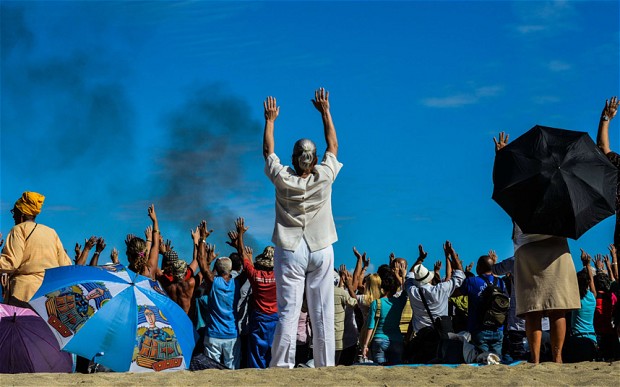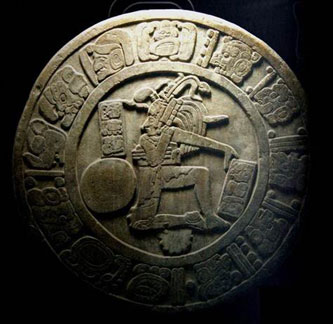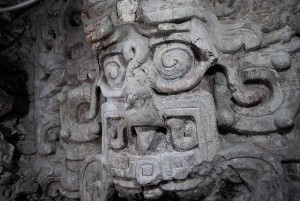 If the Mayan prophecy is true, just how might it all end on Friday? Scientists foretell the cataclysms that could bring on Doomsday
If the Mayan prophecy is true, just how might it all end on Friday? Scientists foretell the cataclysms that could bring on Doomsday
- Comet or super-volcano named as most likely causes of the end of the world
- Pet dogs could transmit deadly plague of cancers carried by foxes
They say it won’t happen, at least not on Friday, but in the event the Mayan prophecy of the end of the world is right, scientists have foretold a raft of bloody and catastrophic fates for us all.
Dark comets, famine, super-volcanoes, catastrophic climate change, and a plague of cancers are just some of the ends that could fulfill the prophecy.
Astrophysicist Professor Jocelyn Bell Burnell, who discovered pulsars, believes the most likely disaster that could pencil Doomsday into Friday’s diary is a black comet.
Such an end would match that of the dinosaurs who after walking the planet for about 165 million years – homo sapiens has been around for a mere 200,000 years – were killed off by a 10km asteroid or comet that slammed into the planet.
Professor Bell Burnell believes if the world as we know it is to end on December 21 it would have to be a dark comet that strikes.
Dark comets have little of the ice and snow that most comets have, and a lot more dust which makes it much more difficult to spot them as they speed through Space.
‘Comets normally are big, dusty snowballs. A dark comet has not much snow and a lot of dust. They are much harder to get a handle on,’ she said.
The collision itself, except for those near the point of impact, would be unlikely to be fatal to the world’s population but it would throw up so much dust into the atmosphere that billions of people could expect a slow death.
Huge quantities of dust would bring on an ‘eternal winter’ in which the sun would be obscured and crops around the world would fail, leading to mass famine.
Dr Dave Rothery, a volcanologist at the Open University, foretells a similar end but he thinks the death-bringing dust would be put into the atmosphere by a supervolcano.
More than 240 cubic miles of molten rock and debris are blasted into the sky by super-volcanoes.
Much of it would remain in the atmosphere as volcanic dust which would, just as with a massive asteroid or comet, block out the sun and cause famine.
‘It would put so much ash and sulphur dioxide into the atmosphere that photosynthesis may break down,” he warned.
A similar, albeit less devastating, even took place in 1816 when a volcano in Indonesia erupted and put so much dust into the atmosphere that it became known as ‘the year of no summer’.
Other scientists asked by The Times what cataclysms could bring on the end of the world on Friday, in line with what many people believe is foretold by the ancient Mayan prophecy, included Bryan Lovell, a former president of the Geological Society.
His favourite Doomsday scenario was a vast escape of methane caused by an undersea landslide.
Methane is a greenhouse gas but it is about 20 times more powerful in warming the world than is carbon dioxide.
Dr Lovell said a huge release of sub-sea methane deposits would accelerate man-made climate change and lead to ‘catastrophic climate change not too many Fridays from now’.
But it is not just scientists who are putting forward theories as to how the world will end and they range from the unlikely to the fantastical.
Among the favourites is that a rogue planet, Nibiru, which has long been inhabiting the far reaches of the solar system, beyond even Pluto, is now on a collision course with Earth.
Scientists have dismissed the theory as ridiculous not just because no one has ever managed to detect it in the outer reaches of the solar system but because if such a large object was heading this way it would have been spotted by now
Scepticism on the part of experts, however, has done little to diminish the determination of thousands of people to find a safe haven from disaster.
Read Mail – Read More
Originally posted 2016-04-17 20:28:05. Republished by Blog Post Promoter













